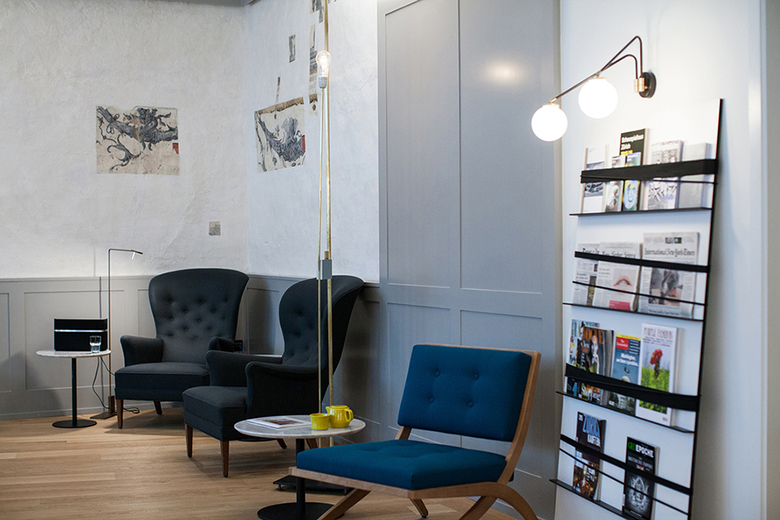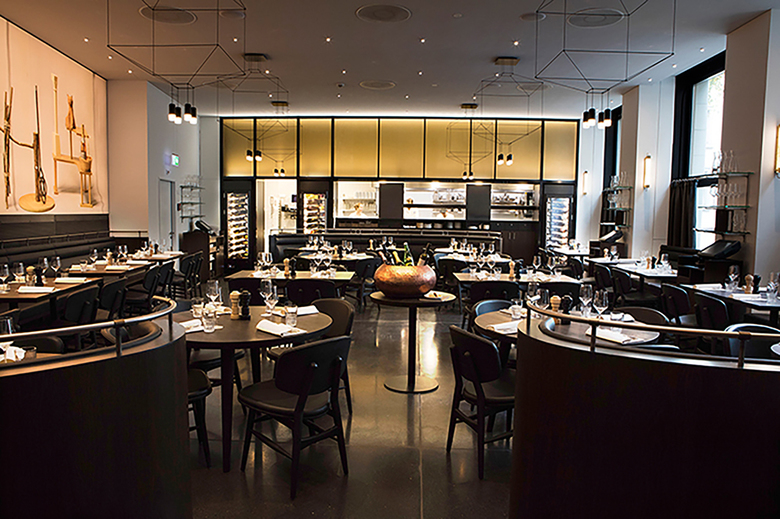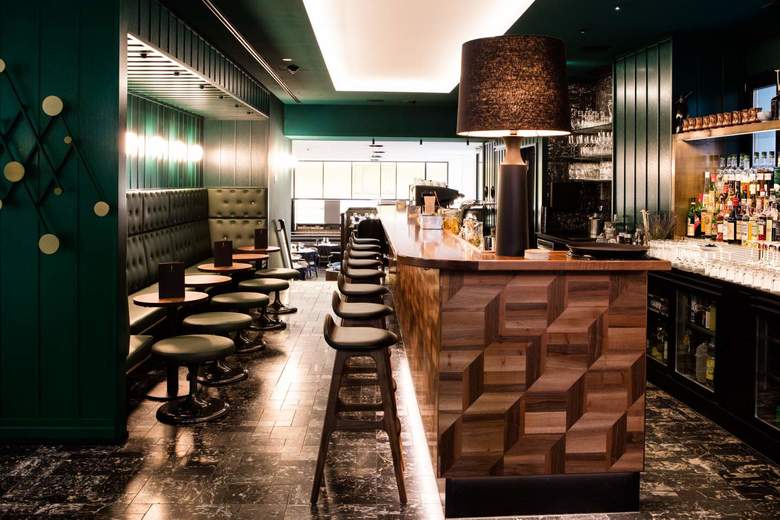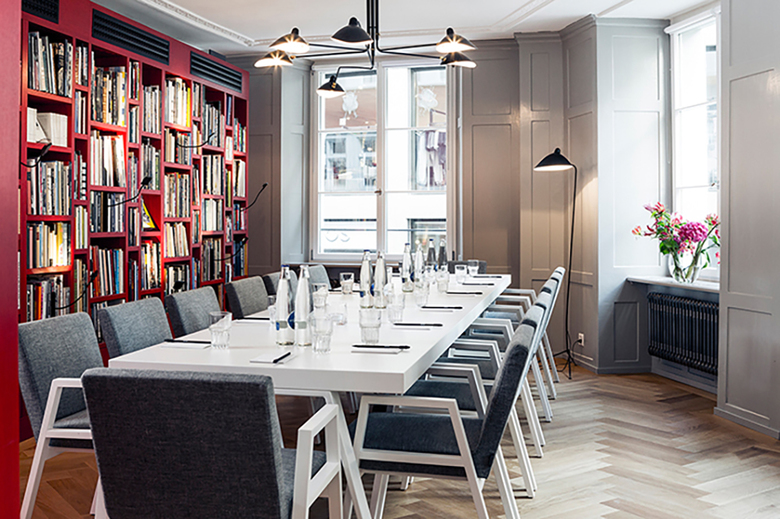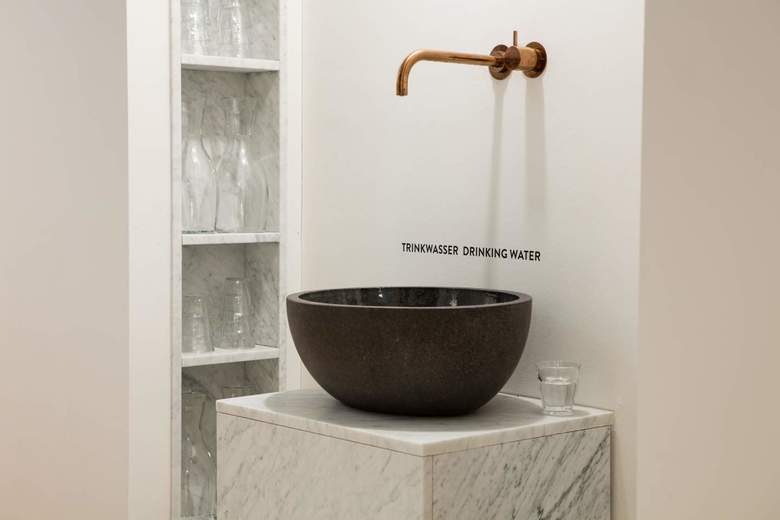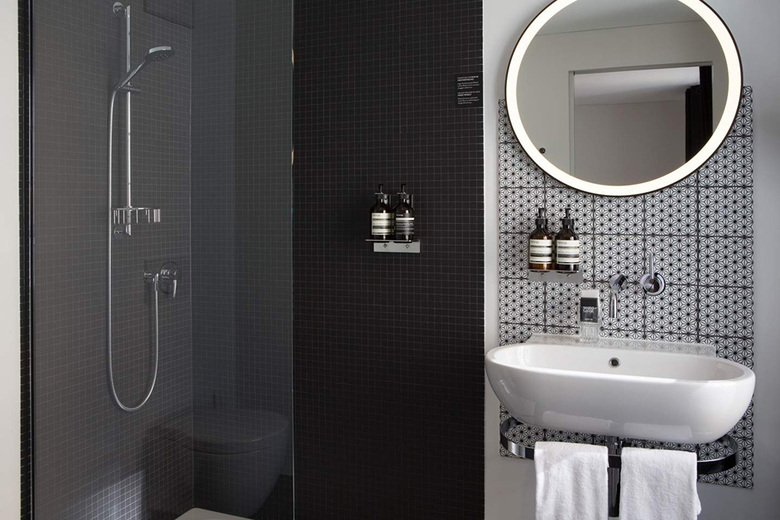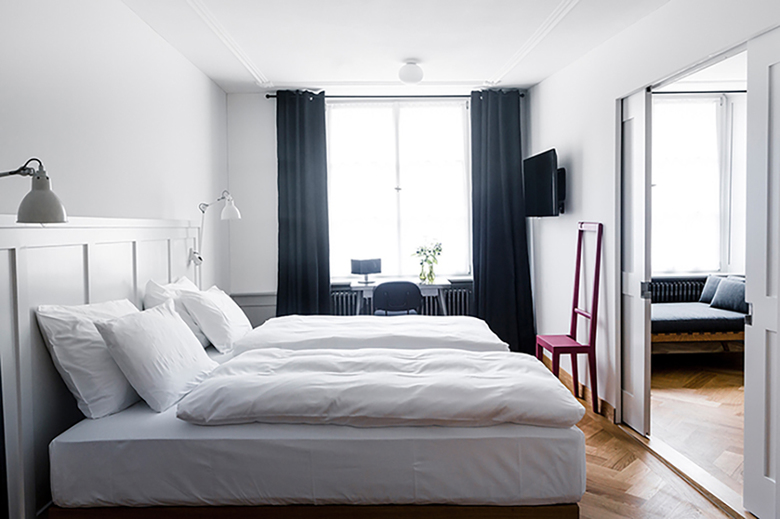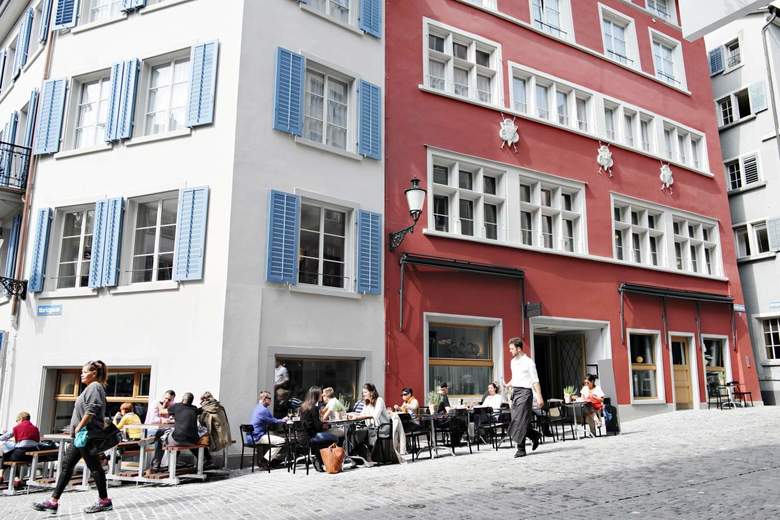Earlier this year World-Architects met with Zurich-based interior designer Karsten Schmidt, an expert in the world of hospitality. We got a tour of one of his recent projects, the Marktgasse Hotel Zurich*, and sat down at the hotel's cafe, Delish, to talk about what is happening today in regards to the design of hotels.
John Hill: What is your background in hospitality and working on historic buildings?
Karsten Schmidt: Twenty years ago I founded my architectural office IDA14, and since then my passion has been to work on the architectue and design of hospitality projects. In these years I was in charge of the interior design for more than fifteen hotels, some of them traditional hotels in historic buildings. The challenge with hotels in historical buildings is in finding the fine balance between modern aesthetics, warm living spaces, and the history of the building. This hotel we are in demonstrates how historic and protected details can be combined with timeless, eclectic design and modern technical features.
In 2010 I became Director of Interior Design for Swissôtel Hotels & Resorts, which I did for three years. I traveled worldwide, from Chicago to China, Cairo, Kuwait, wherever – 200,000 miles a year! It was a great experience. From that, I understood how a brand works: their structures, their needs, and so on.
Interior design is not a product of coincidence. It is much more than nice furniture, lightning and decor. It has to tell a story and at the same time mirror the essence of a brand and the history and the character of the hotel. And of course it has function best for the guests as well as the hotel's employees and management.
Is your position now similar to what you were doing at Swissotel, where you combined the brand with something local?
When I was Director of Interior Design of Swissôtel – a brand with the country in its name – it was obvious to use it. “Swissness” is very positive aspect, so there’s some value to work with it. This is not for every chain, but you have to respect the local aspect wherever you are. Hotels worldwide should get more individual. This is the trend: to ask, “Where are we?” and not to roll out an International Style business hotel. More and more hotel brands understand that today’s guests are searching for unique hotels. So hotel chains start to have boutique and lifestyle brands in their portfolio, with more sophistication, more design. The local factor is becoming more and more the focus.
I would speculate that what is popular now are experiences. So I could see that travelers would want a hotel to offer them experiences or some sort of authenticity. Where is that coming from?
When you have a building like [Hotel Marktgasse] it doesn’t need much. It’s a risk to destroy something like this. With a new building it’s more difficult to create something unique. Everything in hospitality meshes together: Where do the guests come from? What is the type of chain? Where is the building located? What are the restaurant types? Where is the food coming from? A hotel is a very complex system. To be unique, you have to look at every corner of everything and make it special: the food, the quality of the rooms, little details like the water from the tap [photo below] – the little things where you sense somebody took some care. It’s individual and you feel treated like an individual. That makes a hotel unforgettable. You probably remember the last five hotels you’ve been in. There might be one where you feel, “that was special,” but then forgot the others.
Sure, most of them tend to be very much the same. So are the hotel chains similar to McDonald’s, where you go because you know what you’re going to get? They're providing a comfort, a sameness, but now people don’t want that anymore; they want something new or authentic. When I’ve had an experience like that it’s been on the resort end of things rather than at just a hotel.
Authenticity for me is something very important. You have to be careful that you can produce authentic things. This requires attention to the materials, to the people, the smells, and so on. Regardless if it’s a resort, a business hotel, whatever, this is a very important trend in hospitality. There is a changing mentality, which goes along with this intersection and collaboration between hotel chains and large interior designs companies that do the same "typical" hotel style. Good new hotel companies, such as 25hours, understand that people want less representation and more communication. They don’t want a monolith in town where you enter the hotel and are in the hotel world, but you didn’t arrive in town. That's representative! Today's travelers say, "I want to arrive in the city." That means when you enter the hotel, you have a lively lobby, you have a lively bar, and you see people from the city and have the feeling of the town and can meet locals. I visited the Ace Hotel in Los Angeles – it’s a hotspot.
Yea, the Ace in New York is a hotspot too.
I went in the afternoon and there were meetings, there were games, it was the place to be – for locals. So when you go there, there are some guests that you get in contact with, with the big communal tables, you go in the bar and you have contact – that’s arriving in the city. So for me a mega-trend is to share and to communicate.
At the last WAF [World Architecture Festival in Singapore] there was one of the architects of the Ace Hotel in London. He made the entrance smaller, not so impressive. He went out into the area to research the type of craftsmanship, what manufacturers are there. He designed for these people, so they could produce things. Now they can come with their families and say proudly, “This is the hotel we did.” There is a tendency going in this direction, and I like it very much. Even here [at Hotel Marktgasse] we tried to find people in the quarter to do works. It’s much smarter to integrate the project into its place. I try really hard to have the local factor very deep in my design, to communicate with the locals and integrate them into the design.
When we walked around earlier you mentioned "eco hotels." Do you mean like "eco-friendly?" What are the main considerations in those types of hotels?
For me eco is the next trend. But not in the sense that it’s fashionable and will be something else in five years. For me this is the evolution of something. First is share, communicate, and be a part of the city instead of representation. Second is ecology.
I visited the Vigilius Mountain Resort in South Tyrol that Mattheo Thun designed thirteen years ago. The owner gave him money and said, "I want this beautiful place in the mountains." There was an old hotel, but they had to demolish it because he wanted something new. The owner told Thun, “You will never do anything as beautiful as this.” And Thun said, “What we do now is eco not ego.” I like that.
So they made a wonderful hotel thirteen years ago yet it’s still fresh. It’s in the forest, 1,500 meters high, no cars around, reached by cable car. It is really fundamentally thought through in every way. There’s no television in your room. It’s modern. It’s designed. It’s made from the wood from the region. It’s highly isolated. It consumes very little energy. The energy is from the forest: farmers get money for bringing old wood from the forest, so they make energy and heat from this wood – something good for the region and the forest. Then you have the carbon capture in the wood. So a structure made from wood stores the carbon. All the food is regional, seasonal, organic. Wherever you look, it’s thought through.
Nowadays I see so many buildings, even in hospitality, which have not changed in construction and planning in more than twenty years. When you build a building, the interior design may be 10 or 15 years, the decisions about heating and cooling 20 or 30 years, the building itself about 50 years. So when the children now, those carted around by their parents on their bicycles, ask me in 15 or 20 years what did I do … Everything was there: the question was there, the problem was there, the engineering was there, the technical knowhow was there … and you didn’t do anything. This is why I want to start now, even if I don’t have to.
*The design concept for the interiors of Marktgasse Hotel Zurich came from the creative design consultants Kessler & Kessler. The implementation and continuation of the interior was taken over by IDA14 for the operator Ospena Group AG.

